ABRAHAMS, VIVIAN RUDOLPH
(June 5, 1889 — February 3, 1965)
Overseer, Penang and Rewa
Member, 1st Fiji Contingent WWI, 1915 – 1919
Mentioned in Despatches
2nd Lieutenant, 4th Battalion, King’s Royal Rifle Corps
2nd Lieutenant, Fiji Defence Force and Army Reserve, 1920 – 1939
Inspector of Labour, Fiji Civil Service, Suva
CSR, Rarawai, 1924 – 1947
Captain, 2nd (Territorial) Battalion, Fiji Infantry Regiment, WWII
Civil Aviation Authority, Nadi Airport, 1948 – 1955
Warden, Anglican Pro Cathedral, Suva
Fluent Fijian and Hindi speaker
By Michael Abrahams
![]()

My grandfather, Vivian Rudolph Abrahams, was born on 5 June 1889 to parents John (b. London, England 1850) and Adelaide Jane nee Daniel (b. Hargraves NSW, Australia 1870), at Elliston on the banks of the Rewa River, Fiji.
Vivian’s father John landed in Levuka in 1878, presumably to join his brother Abraham, (residing there since 1873), who was a partner in the local firm of Bowman and Abrahams (with extensive trading interests in the Lau Group including Lomaloma, Lakeba, Matuka, Totoya and Ono.) The partnership between Bowman and Abrahams was dissolved soon after John’s arrival in the Colony. The Fiji Times Notice read, “With a view to the dissolution of the partnership existing between them, Messrs Bowman and Abrahams beg to announce that from this date their firm will be in liquidation. Levuka, 29 August 1878.” As best I can determine this covered the Levuka business only with Alexander Bowman and family leaving the capital to take up residence in Lomaloma (returning in March 1880 for a meeting of creditors and to appear before the Supreme Court of Fiji.) Abraham, for his part, looks to have continued trading in Levuka, this time under the auspices of his younger brother John, perhaps as a means of keeping the former firm’s creditors at bay. Bowman’s business interests in the outer islands were purchased by Henry Marks and Company Ltd long after Abraham Abrahams returned with his family to Sydney.
John, who had decided to remain in Fiji, relocated to the Rewa around the time the capital moved to Suva, where he initially entered a partnership with a Mr Van Hagen trading in general merchandise (buying him out a year later.) In 1886 he purchased the business of Messrs Stevens and Johnson, who among other things ran the Elliston Post Office.
John and Adelaide were married in Suva at the English Church, as it was then known, in February 1888 and a sibling for Vivian, Esme Vera, was born in 1895 three years before her mother’s untimely death at age 28. In 1904 John acquired the Rewa Hotel, which the Cyclopaedia of Fiji 1907 described as a “Well known Fijian hostelry pleasantly situated on the right bank of the noble Rewa River, nearly opposite to the great Nausori mill.” By this time Vivian had commenced his studies at King’s College, Auckland, New Zealand from where he returned to Fiji upon the death of his father in 1907. The children were made wards of the Morrison family. John Morrison was Chief Engineer of The Colonial Sugar Refining Company’s (CSR) Nausori Mill.
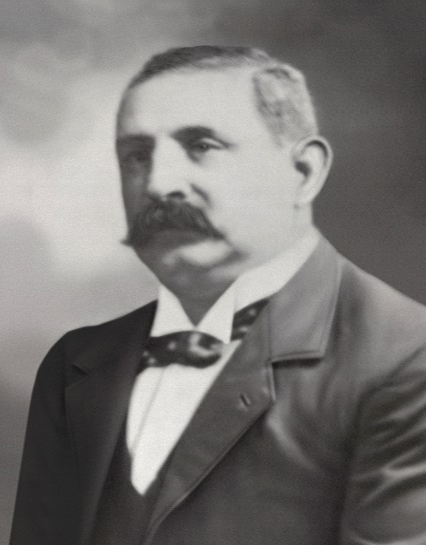

Vivian appears to have secured a job as a Clerk in Penang where he was residing in 1910 (Source: Fiji Times Directory and Handbook of Fiji.) In 1912 he was listed as an Overseer in Rewa (Source: England, United Grand Lodge of England Freemason Membership Registers, 1751-1921. Initiated Lodge of Fiji, Suva 21 October 1912.)
VR Abrahams answered the call for volunteers to fight in Europe in late 1914 as enrolment No. 17 in a force of 56 which made up the 1st Contingent, Fiji Defence Force (57 with Captain Charles Swinbourne included, who accompanied both the 1st and 2nd Contingents to England.)
The 1st Contingent was farewelled by the Governor, Sir E Bickham Sweet-Escott KCMG, at a luncheon hosted by the Honourable Henry Marks at the Club Hotel on 31 December 1914. The men departed Fiji at midnight on board the RMS Makura bound for Vancouver via Honolulu.

Menu for Luncheon hosted by The Rt Hon Henry Marks (with thanks to Jim Sanday)
They arrived in Vancouver on 16 January 1915, ill prepared for the Canadian winter, having travelled in tropical dress. Thanks to the kindness of some of the women of Victoria, where the Makura made a brief stop, they were provided with warm clothing, caps, and mittens for their journey across Canada. The Fijians disembarked in Vancouver and marched to the railway station where they boarded a train for Montreal and onwards to Halifax.
The Edmonton Daily Bulletin of 22 January 1915 reported the arrival of 57 Fiji Islanders in Montreal “enroute to Britain, where they hope to enlist in Kitchener’s army. When they reach England, they will have completed a trip of 11,177 miles, the longest undertaken by any colonials rushing to the defence of the empire. The men are irregulars and are ready to be drafted for whatever purposes seems best. All are expert horsemen and accustomed to discipline and authority. It is expected they will become commissioned officers.”
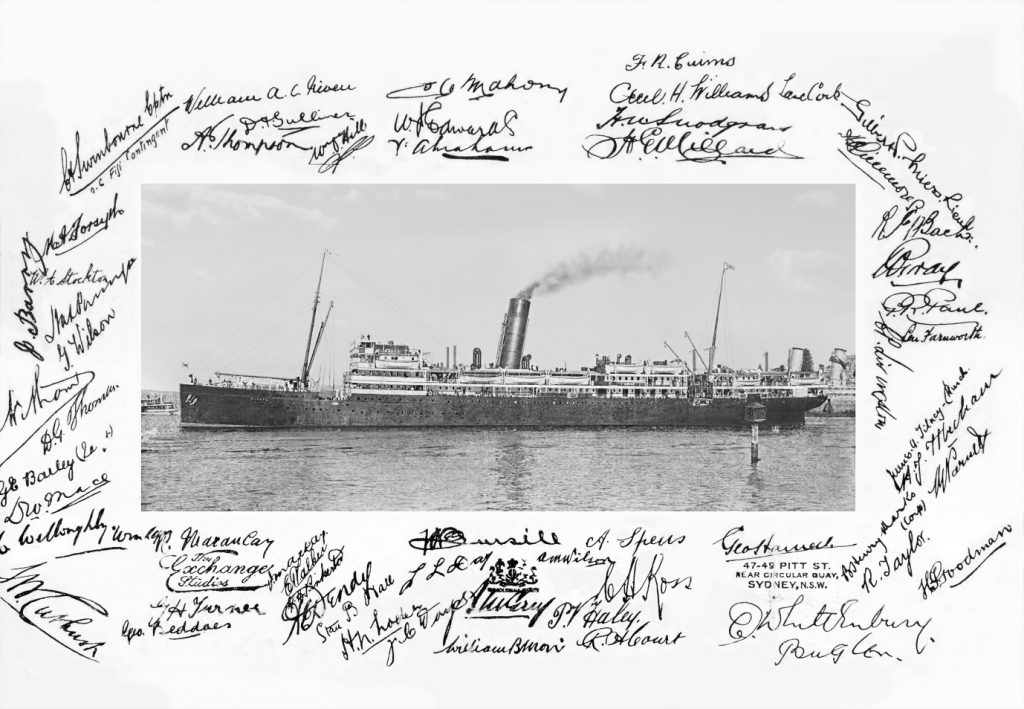
RMS Makura, with signatures of members of the Ist Fiji Contingent
The contingent sailed from Halifax on the RMS Scandinavian on 24 January 1915 bound for Liverpool – a journey not without some peril! As the Scandinavian approached its destination the ship’s Captain was advised that one or two German submarines were operating off Liverpool and that he should return to Queenstown in the south of Ireland, where according to Rifleman Albert Bursill (killed in action February 1917) and reported in the Fiji Times of 13 April 1915, “We had to stay for eight hours. Just before we did leave, we heard that this submarine had sunk one or two British steamers off Liverpool, so we had a lucky escape; next day we passed over the exact spot where they had been sunk, but we could not see anything about anywhere.”
The Scandinavian arrived in Liverpool, England on 1 February 1915. VR Abrahams attested on the same day, in that city, as Rifleman (R/10204), 6/4th Battalion, King’s Royal Rifle Corps (KRRC), which in turn formed part of the 80th Brigade, 27th Division of the British Army.
At the time of attestation VR Abrahams’ middle name, Rudolph, was struck out and replaced by the more politically acceptable Randolph. For the duration of the war, he was known as Vivian Randolph Abrahams. On the same form he gave his sister as his next of kin – Mrs Vera Cozens of Nausori and later of Matanigara Estate, Ba River.
After training in Winchester and Sheerness and before departing for Flanders via Le Harve, the soldiers from Fiji are said to have carved their initials with bayonets in the bar top of the Chandos Hotel (29 St Martins Lane, London WC2N 4ER) located near Trafalgar Square – a tradition continued by those who followed from Fiji and other troops from the colonies. That bar top is now on permanent loan to the Defence Club in Suva, thanks to the efforts of two former Presidents, Les Lawlor (a member of the 2nd Fiji Contingent) and Len Usher.
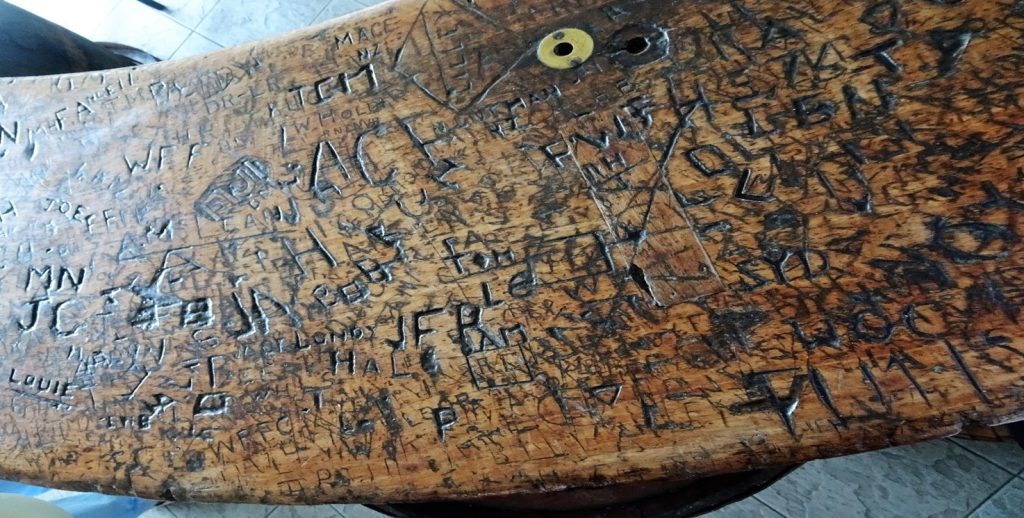
Chandos Hotel bar top at the Defence Club, Suva
They arrived in France on 1 April 1915 and headed for Vlamertinghe, Belgium a few miles west of Ypres by train, where they re-joined their regiment, the King’s Royal Rifle Corps. The Battalion’s War Diary records the arrival of “A draft of an officer and 100 others, including a detachment of 41 from Fiji.”
According to Cpt Swinbourne, in an interview on 4 May 1915, “The Fiji contingent were granted a number of privileges, and not the least was the permission to retain their identity, preserving the Fiji brass badge, worn under the regimental badge, a black Maltese Cross, worn on the hat.”
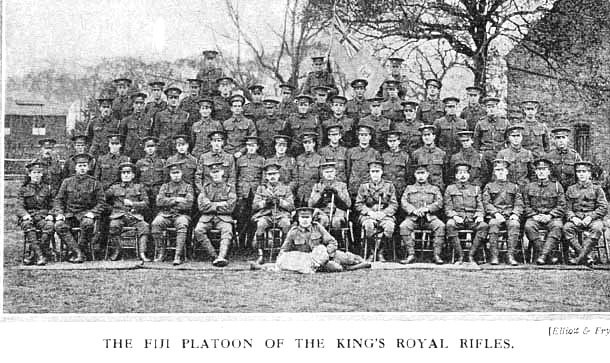
Indeed, this explains the decision announced on 7 April 1915 that the Fiji Contingent was to preserve its identity as a platoon of the regiment and took its place as No. 8 Platoon (43 men), B Company in the 4th Battalion KRRC.
On 9 April 1915 they replaced the Shropshire Regiment on the front line (the notorious Ypres Salient.) The Second Battle of Ypres (usually divided into four battles) commenced on 22 April 1915, when German troops released poison gas against Allied lines north of Ypres, the first time this deadly weapon had been used in war.
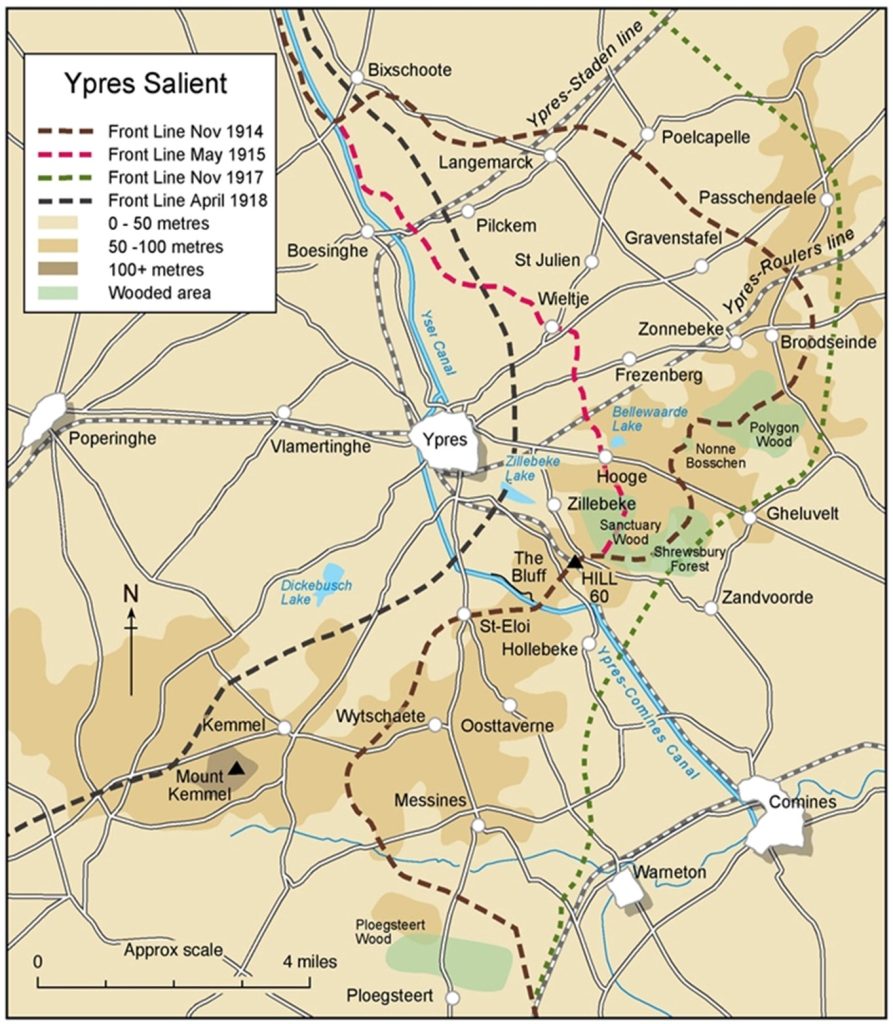
Map of Ypres Salient 1914 - 1918
On 23 April VR Abrahams sustained a wound to his thigh. This occurred in the vicinity of Nonne Bosschen and Polygon Wood. He was initially treated by 81 and 83 Field Ambulances (operating in the Poperinghe area) and then evacuated by train to 5 General Hospital in Rouen, France where he was admitted on 27 April 1915. (VR Abrahams named in The Times List of Casualties published on Monday 24 May 1915, page 4, Issue 40862.)
The 27th and 28th Divisions came under heavy bombardment on 8 May at the start of the Battle of Frezenberg Ridge. During this battle which lasted until 13 May 1915, 9 members of the 1st Fiji Contingent had been killed and 31 wounded. This marked the end of the Fiji Platoon.
VR Abrahams left a nearby convalescent camp on 15 May 1915 and re-joined his Battalion, in a non-combatant role.
In June the Fiji Times reported, “Very sad news was made public on Sunday evening when it was made known that nine of the Fiji Contingent had perished at the front, six having been killed and three having died of wounds. We wish to express our deep sympathy (though sympathy is but a poor thing at best) with the bereaved relatives and friends of the men who have died in a glorious cause, in a war the events of which will be indelibly engraved on the tablets of history.”
On 10 June VR Abrahams penned a letter to a friend in Suva, excerpts of which appeared in the Fiji Times of 31 July 1915:
“It is now June, which makes my departure from Fiji close to six months. When this reaches you, no doubt you will have heard that I have been wounded and the casualties sustained by our boys.”
“For such a small body of men, the casualties are appalling. News has just come to hand that Edwards has died of wounds. He used to be employed at A M Brodziak and Company, Nausori. There are not many of us here now to represent the ‘land of the coconuts.’”
“Before going any further I must tell you of a providential escape I had from death. At 4am one memorable day we got hurried orders to move as the enemy was making a desperate struggle to break our line and that we were to charge a certain German position.”
“This did not come altogether as a surprise as we expected something of the kind. In fights of this kind, not many come back, so it set us all thinking. I felt calm enough, thoughts, however, wandered back to the homeland and all folks there.”
“Fix Bayonets, came the order. Advance – away we went. It was not long before Fritz found out we were coming. A murderous fire was opened on us with machine guns and rifles. We estimate that 15 machine guns were firing on us and each of these weapons is capable of 500 shots per minute.”
“Oh, it was awful. Men fell, some forever – and still we went. The moans and cries of those hit were enough to try the nerves and discourage the bravest. During the advance, more men all about me fell. Day broke and I looked around and saw only two alive besides myself.”
“Well, the task of getting back to our line had to be faced. I had to crawl like a centipede. I luckily came across a turnip field which offered me a certain amount of cover. There I met a Sergeant of the Northumberland Fusiliers wounded in the fighting. Together we finished the journey crawling, as the Germans are known to be very vigilant.”
“All the way across the field the dead and wounded were many. Safely behind the hedge and in the drain, I naturally wondered how the rest of the boys were. About half an hour later I spotted one further up the trench and trawling around, I found four. We found out three had fallen but two later turned up.”
“We were in great peril, as the German snipers worried us all day, and shells kept coming over. Just behind us there was a farmhouse in which our wounded lay.”
“The farmhouse caught fire. Two were burned in it alive and the heat of the fire was awful.
“Our trench was very wet, so we dug a hole and got some dirty water, which by the aid of a candle and a piece of dirty rag we made Oxo.”
“That night we were relieved and marched for twelve miles before we got to sleep. We were shelled but received no casualties. On arrival at the field where we were to stay, we just threw ourselves down on the ground and were soon asleep.”
“Cecil Williams was the first killed. It is very sad here; parcels and papers keep arriving for chaps that have gone.”
On 9 July 1915 VR Abrahams was appointed Lance Corporal. His papers make the point that he was paid as such, for most men would have been required to serve a probationary period without the additional pay.
Under the heading “At the Front: July 27 (1915)” but not appearing in the Fiji Times until September of that year, was the following: “It is with great satisfaction that we learn that a second contingent is on its way to the Front, and it is with greater satisfaction that we learn they are to join the K.R.Rs. Of the 43 men who have served at the Front as members of the King’s Royal Rifles Corps, there are now ten left. Originally the Fiji men composed a whole platoon, now owing to their limited numbers, they form part of a section. We are resting just now away from the trenches and are billeted in large canvas structures. There is a deep river handy and swimming parades are the most enjoyable features of the daily routine, although the water is rather cold in comparison with the Fiji surf and rivers.”
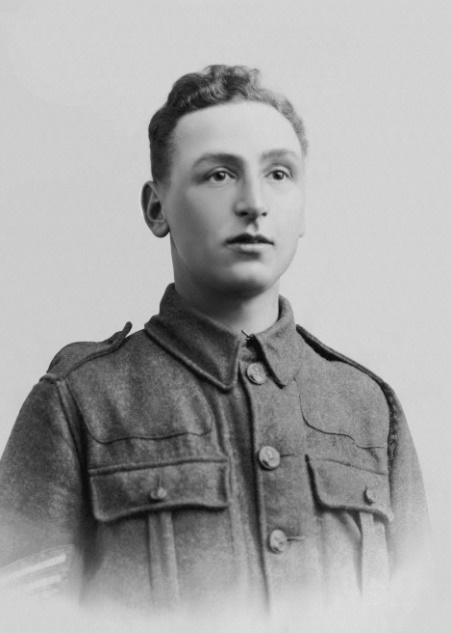
Vivian R (Randolph) Abrahams in France 1915
On 29 July VR Abrahams was admitted to 4 Casualty Clearing Station at Beauval and then moved quickly on to 16 General Hospital at Le Treport. He was suffering from dental caries and fitted with dentures. He then appears to have been struck off his Battalion’s strength and taken up duty with 27 Infantry Base Depot (IBD) in Etaples-sur-Mare on the northern French coast. IBDs were holding camps usually situated near ports, where men were received on arrival from Great Britain or elsewhere and kept in training while they awaited posting to front line units. In general, an IBD supplied drafts of men to a division; in this instance, the 27th Division. Etaples was the principal transit camp for the British Expeditionary Force in France.
The 27th Division remained in action in Flanders for several months before moving on to the Somme and then to a new theatre of war – the Balkan Front with headquarters staff sailing from Marseilles on 17 November 1915 on board the SS Marathon (by this time His Majesty’s Australian Transport Marathon) to Greece where they became part of the British Salonika Force (BSF).
VR Abrahams was appointed 17 IBD’s Orderly Room acting Sergeant on 21 December 1915.
In early 1916 he was assigned, as a clerk, to the headquarters of the 22nd IBD located at Sidi Bishr Camp in Alexandria, Egypt.
Between 18 and 24 July 1916 he received treatment at 17 General Hospital, Alexandria for the ‘effects of immersion.’ No further details are available.
On 11 August 1916 VR Abrahams relinquished his appointment as a clerk (he also appears to have been acting Orderly Room Sergeant at the time) and was reassigned as Regimental Quartermaster Sergeant, still on an acting basis.
The headquarters of 22nd IBD left Alexandria on 19 August 1916 and arrived at Salonika four days later.
Between 30 September and 2 October 1916 27th Division KRRC was involved in the capture of Karajakois, followed by the capture of Yenikoi. Action in 1917 included the Battle of Tumbitza Farm and the capture of Homondos.
VR Abrahams was awarded his first Good Conduct Badge, with an increase of pay, on 1 February 1917. This was a formality but difficult to achieve for it meant serving for two years without a blemish one’s disciplinary record. The ‘badge’ was a single chevron stripe worn on the left cuff, point uppermost (toward the elbow.)
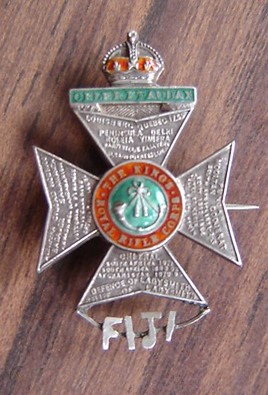
Makeshift sweetheart brooch with Fiji added to miniature KRRC badge
In an interesting and, somewhat intriguing, aside mention should be made that VR Abrahams’ war records included some letters of enquiry written by a Miss M Gilliver, in the first instance purportedly on behalf of a family friend, one S Alphonse (“who is unable to write herself.”) She wrote in a letter received by the War Office on 7 February 1916 that “She (Miss Alphonse) is anxious for news of this soldier Pte. V Abrahams R10204 Kings Royal Rifles, Fiji Contingent. Recently made Lance Corporal. No news has reached England or his only relative in Fiji since the first week of November when a card arrived safely stating that he was leaving for the Mediterranean.” The mailing address given for Miss Gilliver was 23 Halford Road, Richmond, Surrey. In the 1911 Census there was a Minnie Emily Jonny Gilliver listed as a domestic servant at 86 Queens Road Finsbury Park aged 19 years.
By 1915 she may have moved to new employers in Richmond. Another letter in October 1916 sought information on a Sergeant V Abrahams, “Who was last heard of having been discharged from 17 General Hospital Alexandria, Egypt in July last.” On 26 March 917, she writes again, “May I trouble you for information concerning the whereabouts of Quartermaster Sergeant VR Abrahams R10204 of the Kings Royal Rifles, last heard of in Salonika during September.” Miss Gilliver seemed remarkably well informed about the whereabouts and various roles performed by VR Abrahams.
Nothing further is known about her relationship with my grandfather. Perhaps she was a recipient of a rare Fiji Sweetheart Brooch?
On 26 March 1917 VR Abrahams was posted to 2nd Army Entrenching Battalion. Entrenching Battalions were very similar to IBDs where men were held before they were posted to units in the field.
In July 1917, VR Abrahams, Lance Corporal, acting Regimental Quartermaster Sergeant was Mentioned in Despatches, “For distinguished service rendered during the past six months in this theatre (Salonika) of operations” by Lt General Milne CB DSO (see The London Gazette of Friday 20th July 1917) – represented by a small bronze oak leaf emblem attached to the ribbon of the Victory Medal.
VR Abrahams was reclassified into the top medical grade (category ‘A’) on 10 August 1917 (medical examination took place at Summerhill Camp, five miles from Salonika.) He was now considered fit again for service on the front line.
On 4 October 1917 VR Abrahams took up duty again with 22nd Division.
VR Abrahams was then transferred to the relatively new Labour Corps on 8 November 1917 with a new regimental number 388579. At the same time as reverting to his permanent rank of Lance Corporal, he was appointed acting Quartermaster Sergeant of 816 Divisional Employment Company under the command of 22nd Divisional Headquarters and probably based in Lembet.
On 28 January 1918 VR Abrahams was awarded a period of leave in Great Britain. He departed from Itea on 7 February. Later that month he was admitted to Endell Street Military Hospital at Covent Garden, London and discharged after six days. Although his record gave no clue as to his condition it was safe to assume he had malaria. The BSF was encamped in between two malaria infested rivers, so this is probably not a surprise. There were more deaths in that theatre of war from malaria and sexually transmitted diseases than sustained on the Eastern Front. (Indeed, 162,517 cases of malaria were reported among British troops encamped in the Vardar and Struma Valleys.) Further confirmation came on 21 May 1918 when VR Abrahams was examined, for suitability for Officer training, by a Medical Board held at the Military Hospital in Woking. Here it was revealed that he had indeed been suffering from malaria, which may also explain his hospitalisation in Alexandria in July 1916. He was given quinine treatment, placed under orders not to be sent to a malarial area and approved for posting to No 11. Officer Cadet Battalion (OCB), Pirbright (see War Office list of Officer Candidates No.1051 SD 3b, dated 7 May 1918.)
I have a much-faded photo of his ‘B Company’ rugby team at OCB Pirbright, which appears to have had some success given the trophy proudly displayed in front of the players.
4th Battalion KRRC returned to France in June 1918 and saw action in the battles of the Hindenburg Line; pursuit to the Selle and the final advance on Picardy. There is no evidence that VR Abrahams joined them on the Western Front.
As part of the demobilisation procedures VR Abrahams would have had a final medical examination where he could raise any matters of deterioration in his health or condition, and the examining doctor could also highlight them. He had his examination on 4 January 1919, no issues were raised, and he was demobbed the next day. VR Abrahams was discharged from the ranks on 2 February 1919.
On 3 February 1919 VR Abrahams was commissioned 2nd Lieutenant (see Supplement to The London Gazette, 27 February 1919.) At this time, he gave his private address as 39 Lexham Gardens, London. This I discovered later was the residence of the former Governor of Fiji (1904 – 1910), Sir Everard Ferdinand im Thurn, KCMG, KBE, CB. He acted as agent for many of the organisations in Fiji supporting the war effort, looked after the soldiers on active duty and reported back to the Government of Fiji on their welfare.
Lieutenant VR Abrahams departed Liverpool aboard the RMS Scotian on 25 March 1919 bound for St John, New Brunswick, Canada (arrived 4 April 1919) and then by train to Vancouver and sailed on board the RMS Niagara to Suva Fiji.
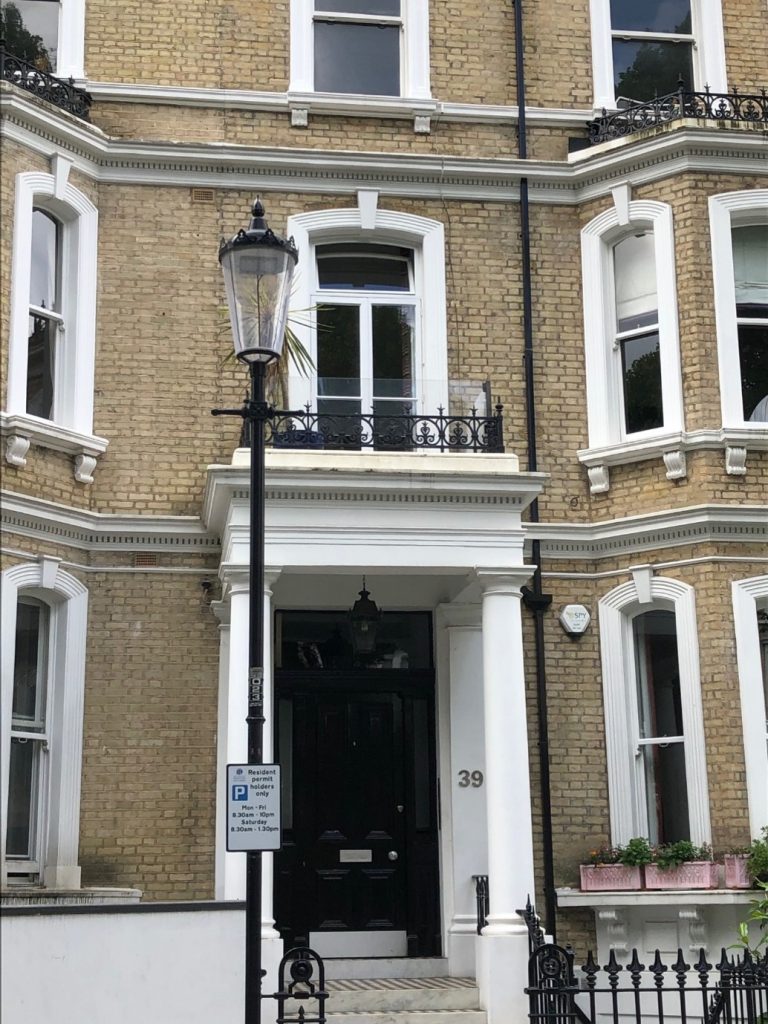
39 Lexham Gardens W8 Royal Borough of Kensington and Chelsea, London
At war’s end 22 members of Fiji’s 1st Contingent of 56 men had either been killed in action or died of their wounds. A further 29 were wounded, some more than once. Ten died in the Second Battle of Ypres, one, Sergeant Cecil Williams, the first of the contingent’s casualties, was killed in action on 26 April 1915. The Battle of Frezenberg Ridge accounted for nine lives lost, six died at The Front and three because of their wounds. These men are commemorated on the Menin Gate Memorial in Ypres and, along with those who followed directly from Fiji or joined overseas armies and gave their lives in Europe and the Middle East, on the Colonial War Memorial Hospital Memorial Board, in the Book of Remembrance at Holy Trinity Cathedral, both in Suva and War Memorials and Rolls of Honour in various Fiji towns, e.g., Levuka and Ba.
Fiji contributed over 1,200 men and women to the war effort, of which 173 died and countless more were wounded.
My grandfather was also one of a 115 members of the Fiji Rugby Union (FRU) who volunteered to fight overseas. According to J E Woodhouse, Secretary of the FRU, in 1917, “It was intended these persons names be inscribed on a marble tablet which will be affixed in some conspicuous place as an everlasting memento of those who have left Fiji in the cause.” The Roll of Honour did not eventuate.
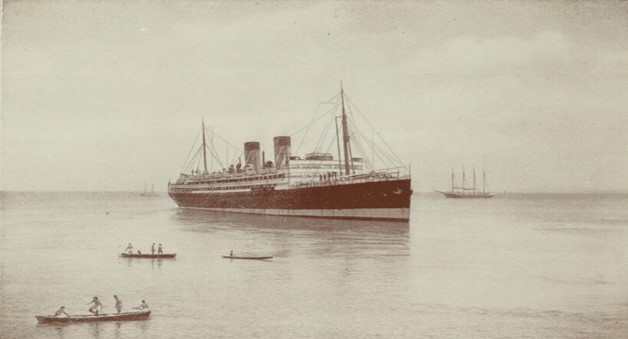
RMS Niagara in Suva Harbour
VR Abrahams qualified for the British War Medal; the 1914-15 Star and the Victory Medal. As an Officer he had to apply for these medals and did not appear to have done so until 1935.
He was formally appointed 2nd Lieutenant, Fiji Defence Force, with effect from 1 January 1920 (see Royal Fiji Gazette, No. 65, 14 August 1920.) VR Abrahams relinquished his commission on 1 September 1921 and was allowed the continued use of the honorary rank of 2nd Lieutenant – though he appeared to have been kept on a list of officers in the Army Reserve.
In 1919 he applied for and joins the Fiji Civil Service and is appointed Temporary Inspector of Labour.
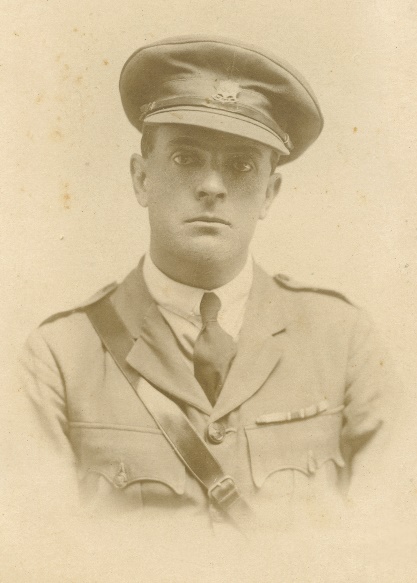
Vivian Rudolph Abrahams
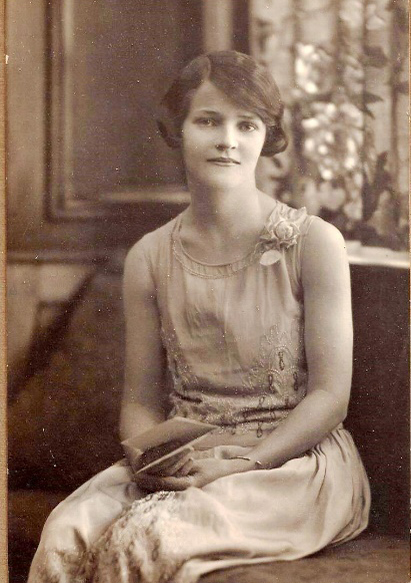
Maud Wilhelmina Ambler
On 9 February 1921 he married Maud Wilhelmina (Minnie) Ambler at Suva’s Pro Cathedral (Holy Trinity) in a service led by the Rev Richard T Matthews BA and witnessed by Trevor Johnson, Lloyd E Ambler (bride’s brother) and, according to records of the Family History Centre of the Mormon Church, William Kearsley. Miss M Ambler, at the time, worked with the Lands Department in Suva.
My father, Maurice John Abrahams, was born in Suva on 10 June 1922.
Following a few different roles, my grandfather resigned from the Fiji Civil Service and joined CSR Ltd in Rarawai in 1924, where he remained for the next 18 years.
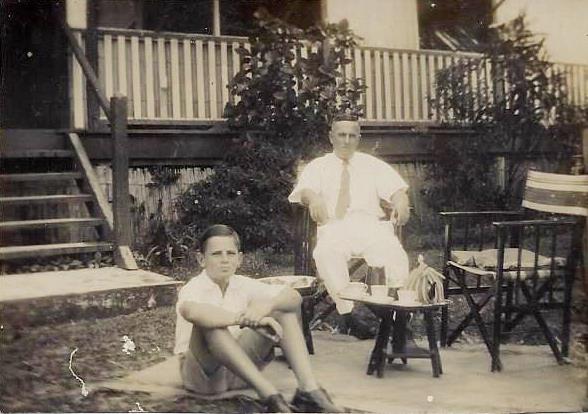
Father and son Rarawai c. 1935
Evidence that 2nd Lieutenant VR Abrahams had indeed been placed in the Reserves appeared in The Half Yearly Army List for the Period Ending 31st December 1938 (published by HM Stationery Office, London.)
I also discovered, in the Chamberlain papers at Birmingham University, that my grandfather had written to the British Prime Minister on 14 November 1938 as follows (conveyed to the PM through the offices of the Governor, Sir Harry Luke KCMG, GCStJ):
“Your Excellency, I have the honour to report that, at the ex-Servicemen’s dinner held at Ba on November 11th, at which twenty-nine were present, it was decided unanimously – to request Your Excellency to convey to the Right Honourable Mr Neville Chamberlain: ‘That this meeting of ex-Servicemen appreciate the Prime Minister’s actions on behalf of the British Empire, and express confidence in his leadership.’ I have the honour to be, Sir, Your faithful and obedient servant, Vivian R. Abrahams.” It is safe to assume that the Munich Agreement of 29 September 1938 had encouraged those who had suffered the horrors of The Great War to back Chamberlain’s leadership – no doubt hoping that the threat of another war had passed.
Lieutenant VR Abrahams joined the local rifle company (approximately 100 strong) when compulsory training was introduced in the districts of Lautoka and Ba on 24 August 1939, after it became obvious that war in Europe could not be avoided.
In an interesting historical aside, the New Zealand Herald of 30 March 1940, under the banner “Victory Tribute”, reported on “The presentation to HMS Achilles of a silver tankard, commemorating the River Plate engagement against the Graf Spee, in which the ship took a prominent part, was made yesterday by Captain VR Abrahams on behalf of the Fiji Defence Force. The tankard, which is decorated with the arms of the force, bears the inscription: ‘To HMS Achilles from the 1st Battalion, Fiji Defence Force, to commemorate the victory of the River Plate.’
In making the presentation to Captain W E Parry, commanding the Achilles, Captain Abrahams described how, on receipt of the news of the Graf Spee engagement, all work ceased in Fiji for a day, and those who knew Fiji would be able to imagine the celebrations that took place. He felt it was an honour to set foot on board a ship whose deeds were hallowed by her recent victory.
Captain Parry asked Captain Abrahams to thank Major C Brewster, Commanding Officer of the 1St Battalion, Fiji Defence Force, for the handsome gift. He said all his officers appreciated the great voluntary effort made by all ranks of the Fiji force. All in the Achilles look forward to revisiting Suva. Following the presentation Captain Abrahams lunched on board with Captain Parry.”
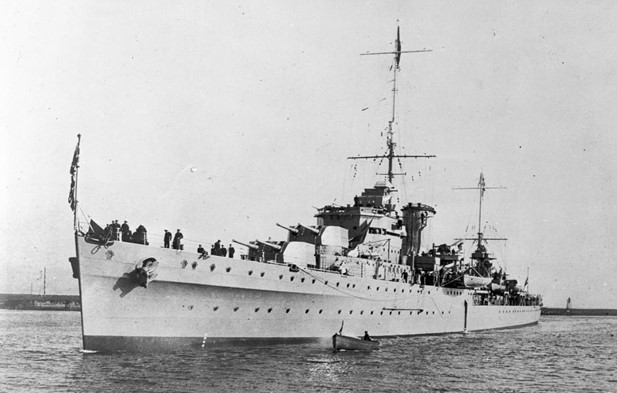
HMS Achilles
On 18 March 1942, in response to the move south of the Japanese, Captain VR Abrahams, 2nd (Territorial) Battalion, Fiji Infantry Regiment is officially called up and deemed to be on loan to the Fiji Government from CSR.
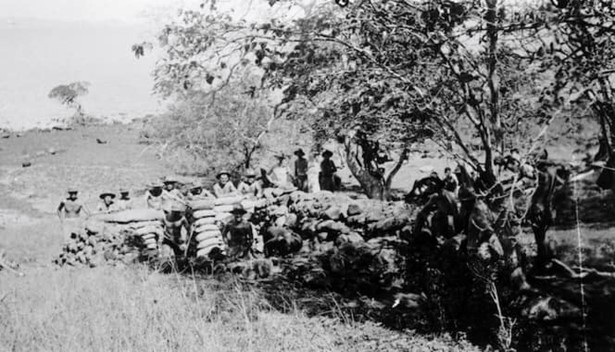
Bomb Shelter Namaka Camp 1941 - 1942
After military service (1942-47), he returned to CSR and retired from the Company in 1948. He was not a member of the company’s Employee Provident Fund, presumably for health reasons. Was it concern about the prolonged impact of the malaria he contracted in Salonika? Possibly. It certainly would not have been the result of the gunshot wound which left him with a lifelong limp. Whatever the reason, his ineligibility to be covered under the Fund appears inconsistent with the findings in 1919 that he was of “Sound condition and in good health and considered to be fit for service in the Fiji Civil Service” by Dr Basil M Wilson, RMO at the Colonial War Memorial Hospital. CSR granted him 17 weeks leave prior to his retirement and a “Compassionate Allowance” of 300 pounds pa, guaranteed for 10 years.
My grandfather’s fluency in Fijian and Hindi saw him recruited by the Civil Aviation Authority of New Zealand (1948-1955) to take charge of labour relations during the construction of the new Nadi International Airport.

My grandparents in Suva c. 1963
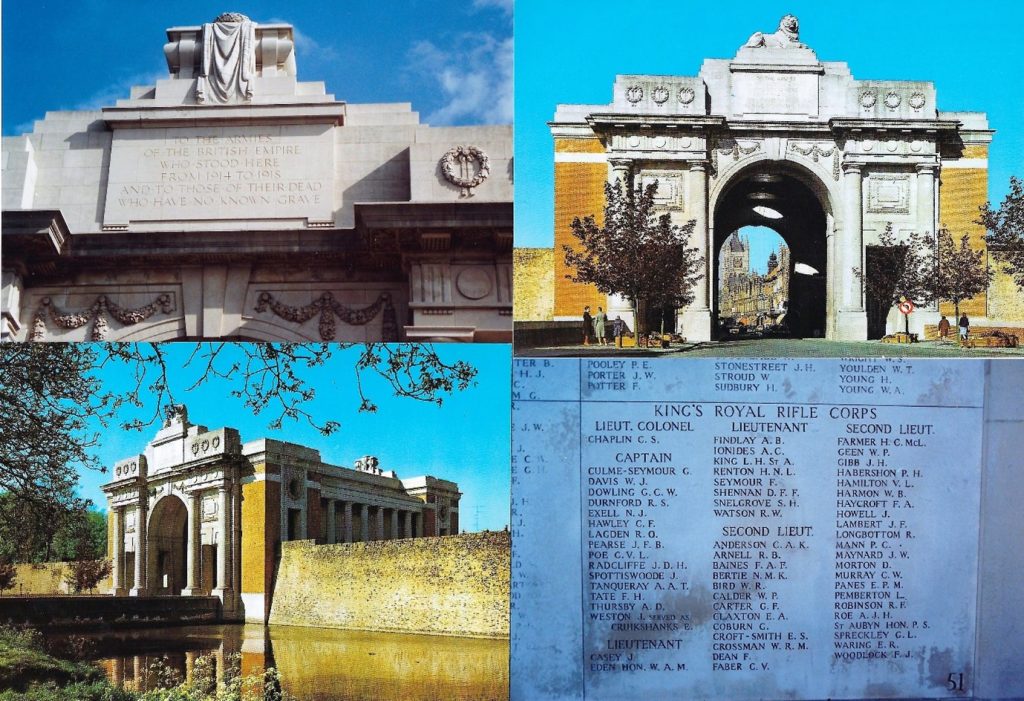
Menin Gate Memorial, Ypres, Belgium
Commemorated on the Menin Gate Memorial from the 1st Contingent and members of No. 8 (Fiji) Platoon, B Company, 4th Battalion KRRC who fought in the Second Battle of Ypres are: Sergeant George Bailey (Suva); Rifleman John Barry (Suva); Rifleman Thomas Cutbush (Rewa); Rifleman William Hill (Nadi): Rifleman Herbert Millard (Navua); Rifleman Robert Taylor (Lautoka); Lance Corporal Cecil Williams (Suva); Rifleman Arthur Wilson (Penang); Rifleman George Wilson (Levuka) and Rifleman Fredrick Zimber (served as Cairns rather than under a German name. Rewa)
Michael Abrahams.
I am grateful for the support I received from Chris Baker at fourteeneighteen research for interpreting my grandfather’s war records and the background and technical information he provided on the organisation and structures of the British Army of WWI. Likewise, I commend Qaravi Na’i Tavi (They Did Their Duty) by Christine Liava’a to anyone whose relatives joined the war effort directly from Fiji or via other armies during WWI. It is an exceptional book and was of great help to me.
![]()
Entry By: Michael Abrahams, Sydney, Australia.
